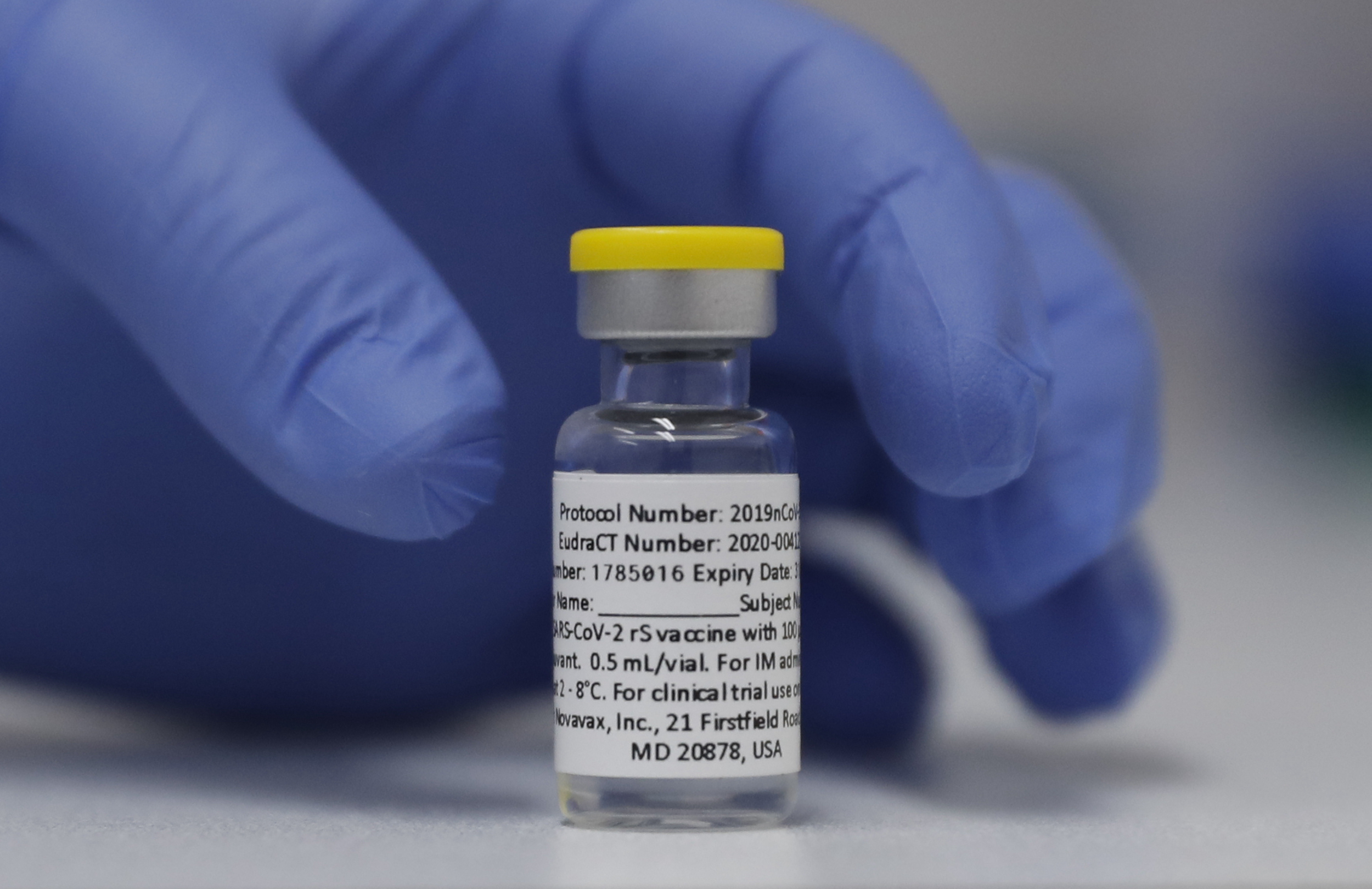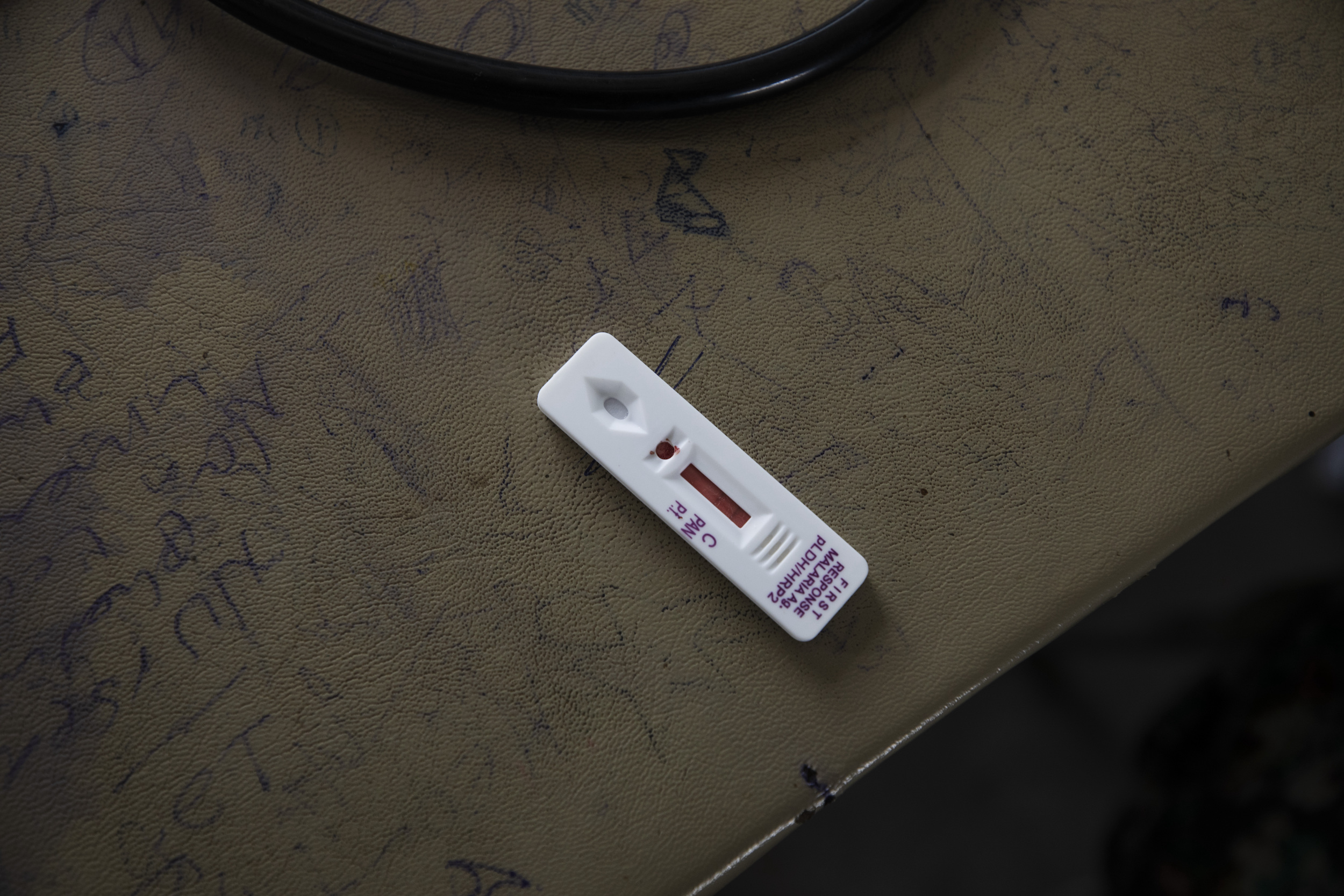 Covering COVID-19 is a daily Poynter briefing of story ideas about the coronavirus and other timely topics for journalists, written by senior faculty Al Tompkins. Sign up here to have it delivered to your inbox every weekday morning.
Covering COVID-19 is a daily Poynter briefing of story ideas about the coronavirus and other timely topics for journalists, written by senior faculty Al Tompkins. Sign up here to have it delivered to your inbox every weekday morning.
Because so many people now find out they are positive for COVID-19 through home tests, experts believe we may only know about 14% of the positive cases in America. The Los Angeles Times reports:
At the University of Washington, researchers who test blood to assess the true level of infections have estimated that only 14% of cases are being reported across the United States. Testing has never captured the full spread of the coronavirus, but the figure is much lower than in some earlier points in the pandemic, when more than 40% of cases were once estimated to be detected.
“Even the cases that are being detected are not being reported as frequently as they used to be,” said Ali H. Mokdad, professor of health metrics sciences at the university’s Institute for Health Metrics and Evaluation. “In many states, many counties, it’s only once a week.”
Between the rise in home testing that goes unreported, budgetary reductions in testing services, and mild or asymptomatic infections going unnoticed, “we don’t really know how many cases we have,” said Dr. David Dowdy, an infectious-diseases epidemiologist at the Johns Hopkins Bloomberg School of Public Health.
Where tests are reported, the positive rate is critically high.
Also test positivity now 17% nationally and a whopping 25% in Florida. Really high also here in Texas and backed up by wastewater testing results. Bottom line, all numbers pointing in the wrong direction
— Prof Peter Hotez MD PhD (@PeterHotez) July 17, 2022
Deaths are mercifully steady, usually running about 300-350 a day (though right now it’s passed 400), but that’s still well over the average U.S. daily death toll of breast cancer and prostate cancer combined. Hospitalizations are creeping up, according to the Johns Hopkins tracker. Positivity rates are climbing. The CDC says that most U.S. wastewater surveillance sites show moderate to high viral levels — with 40 percent hitting the highest level since Omicron snuck up on us last Thanksgiving.
Some medical experts think we may be hitting as many as a million cases a day, though it’s impossible to tell exactly since so many people now rely on at-home rapid tests, if they test at all.
Yet, in a New York Times poll last week of registered voters, less than 1 percent placed the pandemic as their top priority.
Even so, look at individual state data, like this from Oregon. Hospital intensive care units are nearly full, COVID-19 ICU cases are rising, and so are less severe but still hospitalized COVID-19 cases.
A vaccine that claims to be effective against the current variants is now approved for US use

This Wednesday, Oct. 7, 2020 file photo shows a vial of the Phase 3 Novavax coronavirus vaccine ready for use in a trial at St. George’s University hospital in London. (AP Photo/Alastair Grant, File)
Some experts are wondering if the mRNA vaccines, which have no doubt saved lives during the pandemic, may be reaching their limits of protection against new variants. Maybe it is time for a new technology to take on new versions of the virus. One such new vaccine just emerged.
You may have missed the news last week that the Food and Drug Administration last week approved a new COVID-19 vaccine that biotech company Novavax says provides protection against all of the known omicron variants. There is some optimism that the Novavax vaccine may outperform existing vaccines against the emerging BA.5 variant that is spreading fast around the U.S. and the world.
Fortune explains that the new vaccine uses different technology from the other three approved vaccines from Pfizer, Moderna and Johnson & Johnson, which may attract vaccine holdouts:
Novavax, headquartered in Gaithersburg, Md., developed a COVID jab that is protein-based; it relies on more traditional vaccine technology that deploys a harmless version of the spike protein to teach the immune system to create antibodies to fight off the virus. Newer mRNA technology employed by Pfizer and Moderna uses genetically engineered mRNA to create the antibodies. The Novavax vaccine also differs from Johnson & Johnson’s COVID shot in that the Novavax jab uses the actual spike protein of the coronavirus—rather than an adenovirus that encodes the spike protein—to elicit an immune response.
Experts are hopeful that Novavax’s COVID vaccine is different enough from those already on the market that it appeals to vaccine holdouts.
You may ask why we need yet another vaccine when we have three approved shots in the U.S. and other countries have their own as well. But the evidence is mounting that the virus is becoming increasingly resistant to the vaccines we have on hand. NPR reports:
The BA.5 omicron subvariant, which is now the most prevalent coronavirus strain in the United States, is four times more resistant to COVID-19 vaccines, according to a new study.
The strain, which is considered “hypercontagious,” according to the Mayo Clinic, is more defiant against messenger RNA vaccines, which include Pfizer and Moderna.
The BA.5 strain represented 65% of cases from July 3 to 9, according to data from the Centers of Disease Control and Prevention.
It is contributing to increases in COVID-19 hospitalizations and admissions to intensive care units across the country.
The Washington Post explains why the Novavax solution may be just what we need until other drug companies can formulate updated versions of their vaccines to address omicron variants:
“The Novavax data was pretty significant,” said Wayne A. Marasco, an FDA adviser and professor of cancer immunology and virology at Dana-Farber Cancer Institute, noting that it appeared to give good protection even against the challenging omicron BA.5 variant. “I wonder if we’re not witnessing some of the limitation that there may be [of] the mRNA vaccines. Yes, they were first out of the gate. But they don’t appear to have that breadth of protection.”
And the other good news about the Novavax vaccine is that it appears to produce fewer side effects, which again could appeal to vaccine holdouts who do not want to miss work by taking a vaccine. It is possible that Novavax might become a popular booster for people who got Pfizer or Moderna vaccines as their primary doses.
This week: Congress considers assault weapon ban bill that has little chance
This week, a Congressional committee will take up proposed legislation that would ban assault weapons. Rep. Jerrold Nadler (D-N.Y.), chairman of the House Judiciary Committee, said, “It is beyond frightening and disturbing that a weapon that was designed as a tool of war has found its way into the hands of 18-year-olds and onto our streets. … Any weapon that allows for the quick and efficient slaughter of children in our schools has no place in our communities.”
Also on Wednesday, the House Oversight Committee is scheduled to hear from the heads of three gunmakers: Smith & Wesson Brands; Sturm, Ruger & Co; and Daniel Defense. The committee has been examining gun violence and gun sellers for years. Committee members say they are interested in marketing and promotional materials used by the manufacturers for AR-15-style semi-automatic rifles. You can also expect the members to press the companies for information about profitability.
The assault weapon bill’s sponsor, Rep. David Cicilline (D-R.I.), said the ban would apply to new weapon sales and not affect those who already own such weapons. And while the bill has 211 co-sponsors — all Democrats — it is unlikely that such a bill has a chance of passing before the midterm election, if ever.
You can read the bill here. The bill’s summary says H.R. 1808 would make it “a crime to knowingly import, sell, manufacture, transfer, or possess a semiautomatic assault weapon (SAW) or large capacity ammunition feeding device (LCAFD).” The bill exempts retired law enforcement officers.
The bill would permit the continued possession, sale, or transfer of grandfathered semiautomatic assault weapons but would require them to be “securely stored.”
And the bill says, “A licensed gun dealer must conduct a background check prior to the sale or transfer of a grandfathered semi-automatic assault weapons between private parties.”
One other part of the bill would allow possession of large-capacity magazines, but people who own them now would not be allowed to sell or transfer them to anybody else.
When he was running for president — and several times since — Joe Biden said he would like to pass an assault weapon ban styled after the 1994 assault weapon ban.
Last week, The Associated Press advised journalists “to refrain from using the terms “assault weapon” and “assault rifle,” which they call “highly politicized.”
Gun activists argue that the phrase “assault weapon” should only apply to fully automatic military weapons, which are, essentially, machine guns, a whole different highly regulated classification of weapon.
But “assault weapon” has a legal definition that was described by the 1994 federal legislation that banned the sale of assault weapons for a decade. That legislation’s definition included semi-automatic AR-15 style rifles that have foldable stocks, can attach flash suppressors, can use pistol-style grips and can accept large capacity ammunition magazines
The AP advisory says:
The preferred term for a rifle that fires one bullet each time the trigger is pulled, and automatically reloads for a subsequent shot, is a semi-automatic rifle. An automatic rifle continuously fires rounds if the trigger is depressed and until its ammunition is exhausted.
But even that definition is not specific enough since there are many semi-automatic rifles that can range in caliber, from a .22 rifle to a high caliber military weapon, like a .50 caliber weapon. My advice is to be as specific as you can. You could report, for example, “the weapon was a .223 caliber AR-15 style rifle with a 15-round magazine.” (Incidentally, don’t say “clip.” Hardly any modern weapon uses an ammo clip, which is more associated with old military rifles. Here is a much more detailed explanation.)
The new, more powerful AR-15 style rifle
WUSA-TV produced a story about a new model of AR-15 style rifle that fires a new round that is accurate to a thousand yards and can pierce nearly all body armor. Although the $8,000 rifle is not currently widely available, gun control advocates will use this as an example of how civilian rifles are analogous to military weapons in mass shootings. The Sig Sauer MCX Spear fires a .227 Fury round, as you can see in this promotional video from the gunmaker. The video says the gun was produced as the U.S. Army’s historic Next Generation Squad Weapons Program (NGSW).
Pet blood shortage
Newscasts often report human blood drives but veterinarians say that since the pandemic, pet owners have not offered their dogs as blood donors as often as they once did. Like humans need blood for transfusions, so do pets. Experts say that a single donation can save as many as three pets.
The American Veterinary Medical Association has more details:
Dr. Anne S. Hale has founded and led animal blood service providers since the mid-1990s and said the shortage of veterinary blood products has been growing over the past 20 years as transfusions have shifted from being a rarity to a daily element of emergency room and specialty veterinary practice. At the same time, fewer veterinarians secured donated blood supplies because fewer of them were working as solo-practice generalists.
“That doesn’t happen as often these days as we have more centralized ER and specialty practice,” she said.
As practices and hospitals grew, securing blood supplies needed a centralized source—such as a structured, national blood donation program—which hasn’t emerged.
“Our concerns are that, as we advance in critical care medicine, internal medicine, oncology, all of those have needs and wants for blood products as part of their treatment protocols,” Dr. Hale said. “We don’t have a real opportunity to bring together an organized way of providing blood products across the nation.”
Could an end to malaria deaths be in sight?

A malaria test indicates a positive result at the Sudanese Red Crescent clinic in Hamdayet, eastern Sudan, near the border with Ethiopia, on March 17, 2021. (AP Photo/Nariman El-Mofty)
Let’s start the week with some encouraging, even exciting news.
We may be getting close to a hugely important medical event: the beginning of the end to malaria deaths. This is a disease that causes more than 627,000 deaths a year. 241 million people were sickened by malaria in 2020 alone.
The Guardian reports on a new vaccine called R21 that is producing results that researchers call “astonishing.”
The RTS,S vaccine, given the green light last year, has a modest level of efficacy, preventing 39% of all malaria cases and 29% of severe cases; however, the new R21 jab is the first to exceed the WHO target of 75%. In a 2019 trial in Burkina Faso it demonstrated high-level efficacy of 77%, results expected to be echoed at the end of a larger trial in four African countries.
The Serum Institute of India, the world’s largest vaccine manufacturer, stands ready to deliver at least 200m doses annually – a scale necessary to beat malaria. In 2020, Africa saw an estimated 228m cases of the disease, about 95% of the world’s total.
Mainga Hamaluba, head of clinical research at the Kemri-Wellcome Trust in Kilifi and principal investigator on the phase III trial, says watching R21’s progression has been astonishing. In 2017, when she returned to Kenya after training in the UK, it was just one of several promising vaccine candidates. It looked like “a bit of a leap of faith – until we saw the data from the Phase II trial”.
Adrian Hill, director of the Jenner Institute, who has long championed the vaccine believes that R21 could reduce deaths substantially from next year, and by as much as 75% by 2030. “With a fair wind, the 2030s could see the reduction of malaria from a major killer … to a more localized minor cause of mortality,” he says. He believes the world could be on course for the ultimate goal of eradicating malaria by 2040.
The key, researchers say, is funding for research to refine and test the vaccine. Such funding typically comes from the World Health Organization’s Global Fund.
We’ll be back tomorrow with a new edition of Covering COVID-19. Are you subscribed? Sign up here to get it delivered right to your inbox.







